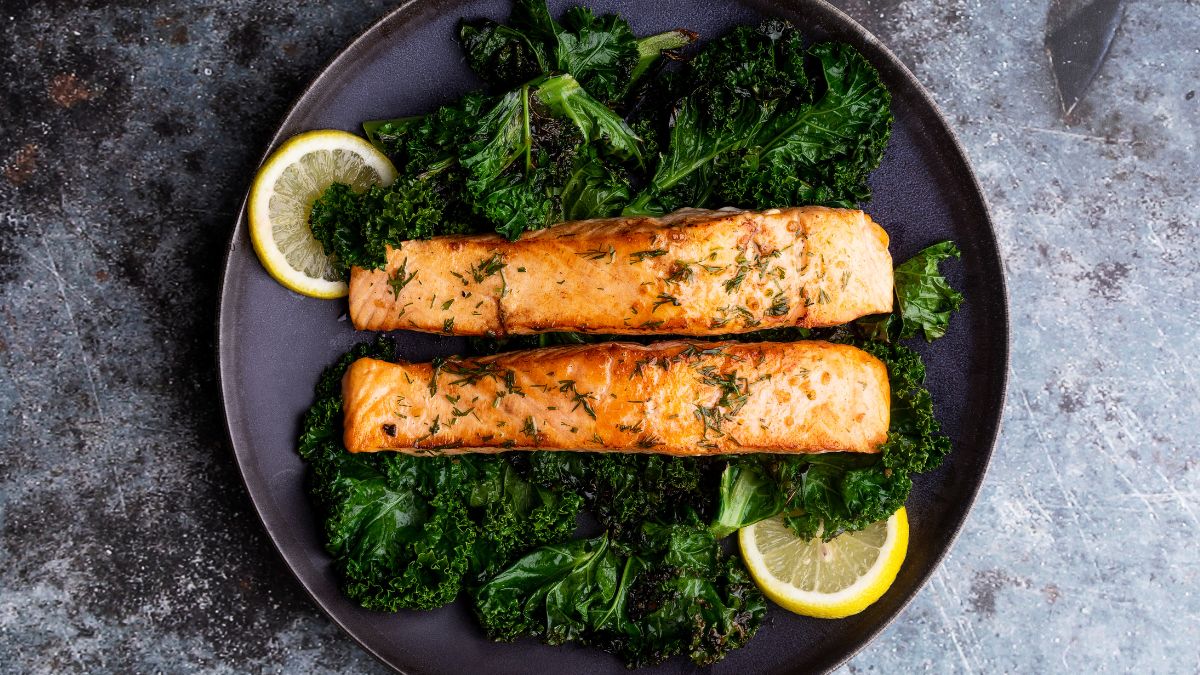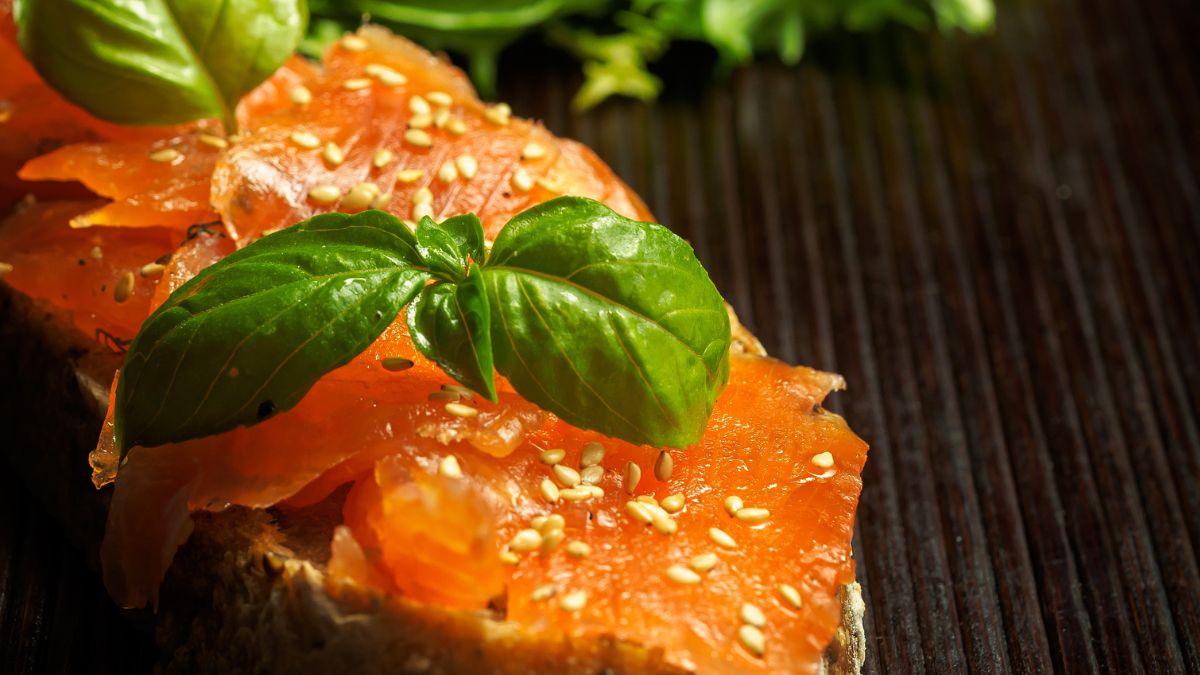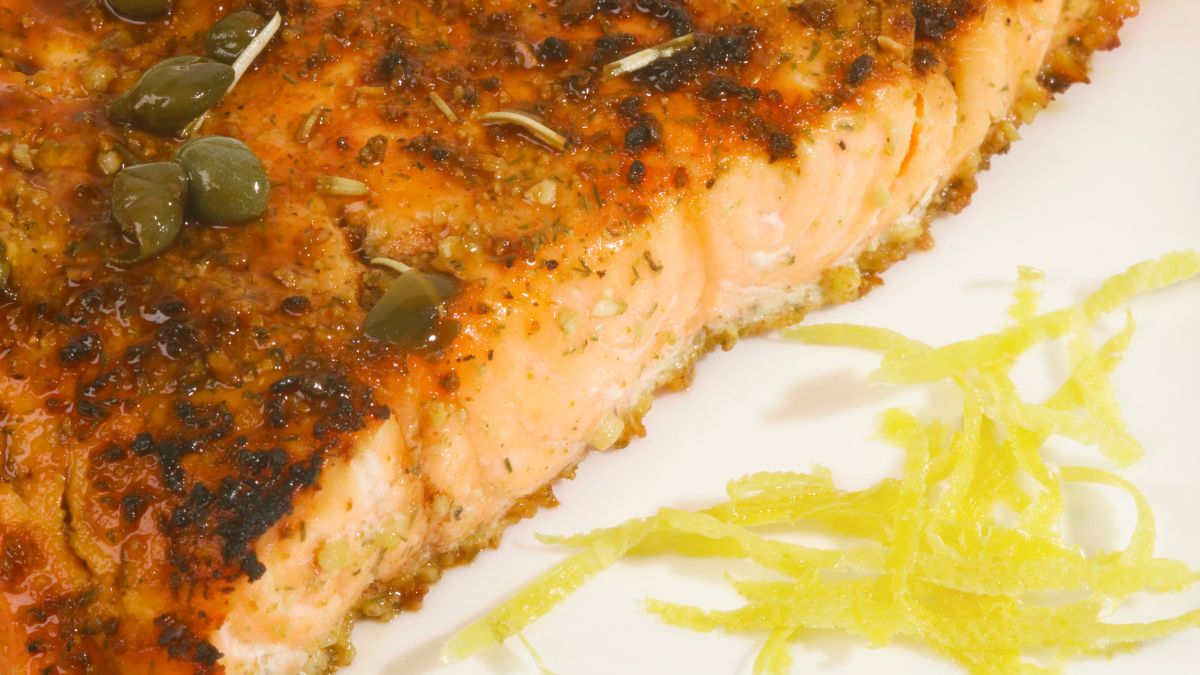9 Amazing Dill Substitutes in Salmon Dishes You Must Try!

Salmon is one of my favorite fish to cook and eat, but I have to admit I’m tired of the standard lemon and dill seasoning. Don’t get me wrong— dill is a classic for a good reason. But as someone who cooks salmon at least once a week, I need more variety in my recipe rotation. I set out on a mission to find alternative ways to flavor salmon without relying on dill as the star of the show. So, what are the best substitutes for dill in salmon dishes?
You can use anything from salty capers to refreshing basil, tarragon, parsley, thyme, chives, minced garlic and chili, or citrus zest and sauces like soy sauce and fish sauce to substitute dill in salmon dishes.
I hope these flavorful alternatives open you up to new culinary adventures with everyone’s favorite fish. Now, let’s dive into all the options and explain what each brings to the table!
Capers
Capers are one of my favorite ways to add flavor to salmon without using dill. Those little green buds pack a punch with their sharp, salty taste.
Just a tablespoon or two of caper berries or caper berries provide a tangy, savory kick. You can sprinkle them right on top of pan-seared salmon filets or fold them into lemon butter to make a quick caper butter sauce.
You can also add capers to pasta, rice, or fresh tomato salads as a side for your salmon. Their vinegary flavor helps cut through the richness of the fish. For extra flavor, look for capers packed in a flavorful brine, like red wine vinegar or chili peppers.
Basil

Basil adds an aromatic, licorice-like flavor that pairs perfectly with fish. To use basil, simply chop about 1/2 cup of fresh basil leaves and sprinkle them over the salmon before cooking.
The heat will release the basil’s essential oils, infusing the fish with flavor. You can also make a quick basil pesto to drizzle overcooked salmon.
To boost the basil flavor even more, you can add a splash of white wine or lemon juice and a pinch of crushed red pepper flakes to the basil. The acidity helps bring out the herbal notes of the basil, while the red pepper adds a little kick of heat.
Tarragon
Tarragon has an anise-like flavor with hints of licorice that pair beautifully with fish. I like to make tarragon butter by blending fresh tarragon leaves into softened butter.
Just spread the tarragon butter over the top of your salmon filet before baking or grilling. The butter will melt into the fish, infusing it with the herb’s flavor.
You can also make a tarragon vinaigrette for a salmon salad. Whisk together olive oil, white wine vinegar or lemon juice, Dijon mustard, honey, salt, and pepper. Add 2 tablespoons of chopped fresh tarragon and toss with cooked salmon, greens like arugula or spinach, and veggies such as asparagus and radishes.
Parsley
Parsley’s fresh, green flavor complements the fish perfectly. Parsley has an herbaceous, almost grassy taste that’s lighter than dill.
Chopped parsley makes a great garnish for pan-seared or grilled salmon. Just sprinkle it on top for a pop of color and flavor. Or, you can make a parsley pesto to spread on salmon before baking or grilling. Blend parsley, olive oil, parmesan cheese, garlic, and lemon juice. So good!
You can also make a parsley-based sauce. Here’s how to do it!
Thyme
Just a sprinkle of fresh or dried thyme leaves will do the trick.
One of my favorite ways to flavor salmon with thyme is to make lemon thyme salmon. I place salmon filets in a baking dish and sprinkle them generously with lemon thyme, lemon zest, salt, and pepper.
I then drizzle the filets with olive oil and lemon juice and bake at 400 °F (200 °C) until the salmon is opaque and flakes easily with a fork, about 10-15 minutes. The bright, citrusy flavor of the lemon complements the thyme beautifully and adds a tangy punch to the salmon.
Chives
I prefer fresh chives because they have more flavor, but dried chives can work in a pinch. Just use about 1/3 less of the dried herb. Chop the fresh chives into small pieces to release their aroma and flavor.
Mix 2-3 tablespoons of snipped fresh chives into 1 pound of salmon before cooking. If you are using dried chives, use 1-2 tablespoons of dried chives per pound of salmon. Rehydrate the dried chives in a bit of water first, if possible.
Citrus Zest

The bright, tangy flavor of oranges or limes pairs perfectly with the rich, oily salmon. Zest one orange or two limes directly over the salmon filet. The zest is the colorful outer layer of the citrus peel that contains essential oils for maximum flavor.
Use a zester, grater, or peeler to remove just the zest, avoiding the white pith underneath, which can be bitter. Sprinkle the zest evenly over the top of the salmon.
I also squeeze the juice from the orange or limes over the salmon for extra citrus punch.
Soy Sauce or Fish Sauce
Both of these sauces add a savory, umami kick that complements the rich flavor of salmon.
I usually marinate the salmon in a mixture of soy sauce or fish sauce, a bit of brown sugar, grated fresh ginger, and rice wine or sherry.
The sugar helps balance the salty flavors, while the ginger and wine add freshness. Let the salmon soak up the flavors for at least 30 minutes.
Minced Garlic and Chili
To make this simple seasoning, mince 3-4 cloves of garlic and 1/2 a small chili pepper. Depending on your heat tolerance, you can use any chili you like; just mix the minced garlic and chili with a bit of olive oil, salt, and pepper. Spread the mixture evenly over the top of the salmon filet.
Broil the salmon in the oven about 6 inches from the heating element for 10-15 minutes until the fish is opaque and flakes easily with a fork.
Or, pan-sear the salmon in a hot skillet with some olive oil for 3-5 minutes per side. The garlic and chili will get nicely caramelized, adding lots of flavor to the fish.
I would love to hear about your favorite dill substitute in the comments below! What do you usually use?
